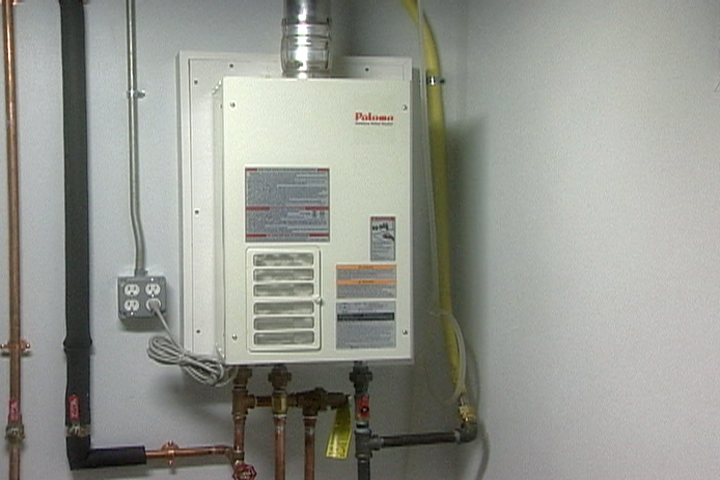Just how do you really feel with regards to How to Maintain Your Water Heater & Prolong its Life?

Warm water is essential for daily convenience, whether it's for a rejuvenating shower or washing dishes. To ensure your hot water system runs efficiently and lasts longer, routine maintenance is vital. This short article offers sensible pointers and understandings on how to keep your home's warm water system to avoid interruptions and expensive repair work.
Introduction
Preserving your home's hot water system could seem challenging, but with a few simple steps, you can ensure it operates smoothly for years ahead. This overview covers everything from comprehending your hot water system to do it yourself maintenance suggestions and recognizing when to call in specialist assistance.
Value of Maintaining Your Warm Water System
Routine upkeep not just expands the life expectancy of your warm water system but additionally ensures it runs efficiently. Disregarding upkeep can lead to reduced effectiveness, greater power bills, and even early failing of the system.
Indications Your Warm Water System Requirements Upkeep
Knowing when your warm water system requires interest can avoid major problems. Look out for indications such as irregular water temperature level, strange noises from the heating system, or rusty water.
Recognizing Your Hot Water System
Prior to diving right into maintenance jobs, it's valuable to comprehend the fundamental parts of your warm water system. Commonly, this includes the hot water heater itself, pipelines, anode poles, and temperature controls.
Monthly Upkeep Tasks
Regular regular monthly checks can help catch small concerns before they intensify.
Purging the Hot Water Heater
Purging your water heater gets rid of debris buildup, enhancing efficiency and lengthening its life.
Checking and Replacing Anode Rods
Anode poles avoid corrosion inside the tank. Inspecting and changing them when worn out is important.
Checking and Changing Temperature Level Setups
Adjusting the temperature settings makes certain optimum performance and security.
DIY Tips for Upkeep
You can carry out numerous maintenance jobs yourself to maintain your hot water system in leading condition.
Looking for Leaks
Consistently check pipes and links for leaks, as these can lead to water damages and higher bills.
Evaluating Stress Alleviation Valves
Examining the pressure safety valve ensures it works appropriately and stops extreme stress build-up.
Insulating Pipes
Protecting hot water pipes minimizes warm loss and can save energy.
When to Call a Specialist
While DIY upkeep is useful, some issues call for expert knowledge.
Facility Problems Calling For Expert Assistance
Examples consist of major leakages, electrical troubles, or if your water heater is consistently underperforming.
Regular Professional Maintenance Conveniences
Expert upkeep can include complete evaluations, tune-ups, and guaranteeing conformity with safety and security criteria.
Verdict
Routine upkeep of your home's warm water system is important for performance, longevity, and price savings. By complying with these suggestions and understanding when to seek expert aid, you can make certain a reliable supply of hot water without unexpected disruptions.
How to Maintain an Instant Hot Water Heater
Before tinkering with your hot water heater, make sure that it’s not powered on. You also have to turn off the main circuit breaker and shut off the main gas line to prevent accidents. Also turn off the water valves connected to your unit to prevent water from flowing into and out of the appliance. 2. When you’re done, you have to detach the purge valves’ caps. These look like the letter “T†and are situated on either side of the water valves. Doing so will release any pressure that has accumulated inside the valves while at the same time avoid hot water from shooting out and burning your skin. 3. When the purge valves’ caps are removed, you have to connect your hosing lines to the valves. Your unit should have come with three hoses but if it didn’t, you can purchase these things from any hardware or home repair shops. You can also get them from retail stores that sell water heating systems. Read the user’s manual and follow it to complete this task properly. When the hosing lines are connected, open the purge port’s valves. 4. You should never use harsh chemical cleaners or solutions when cleaning your unit. Make use of white vinegar instead. It should be undiluted and you’ll probably use about 2 gallons. 5. Now flush your water heater. This task should probably take about 40 minutes. We can’t give you specific directions for this because the procedure is carried out depending on the type, model and brand of your heater. With that being said, refer to the user’s manual. 6. When you’re done draining the unit, you have to turn off the purge port valves again. Remove the hosing lines that you earlier installed on each of the water valves. Put the valve caps (purge port) back in their respective places and be very careful so as not to damage the rubber discs that are found inside these caps. 7. Now that everything’s back in place, check your user’s manual again to find out how to reactivate your water heating system. 8. Once it is working, turn one of your hot water faucets on just to let air pass through the heater’s water supply pipes. Leave the tap on until water flows smoothly out of it. https://www.orrplumbing.com/blog/2014/september/how-to-maintain-an-instant-hot-water-heater/

As a devoted person who reads on Water Heater Maintenance Tips You Can't Afford to Forget, I assumed sharing that portion was important. Feel free to set aside a second to promote this post if you appreciated it. Thanks for your time. Don't forget to pay a visit to our site back soon.
View Website